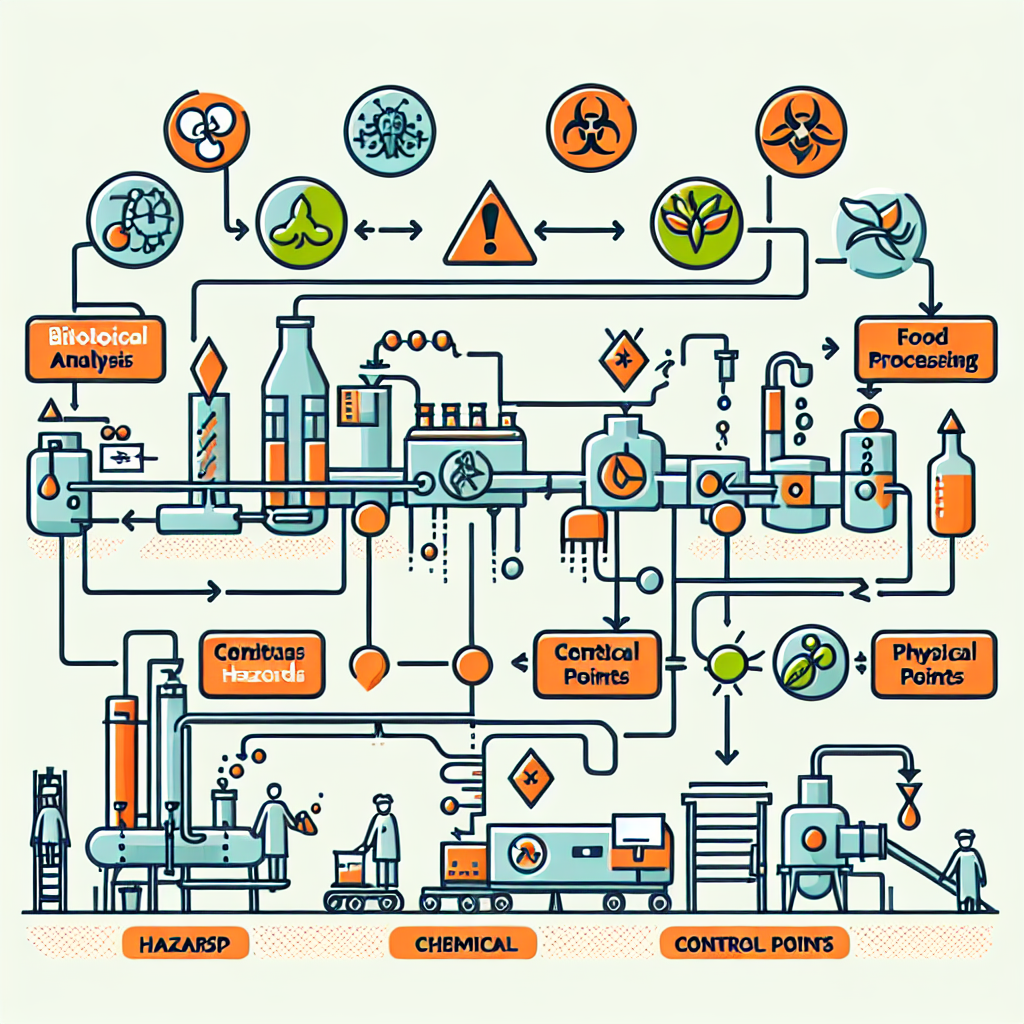Hazard Analysis and Critical Control Points (HACCP) is a preventive approach to food safety that identifies biological, chemical, and physical hazards in production processes that can cause the finished product to be unsafe. It designs measurements to reduce these risks to a safe level. As a systematic approach, HACIDPS helps food processing companies ensure food safety.
The following are the six essential steps to successfully implement HACCP in the food processing industry.
Step 1: Assemble the HACCP Team
The first step in implementing a HACCP system is to assemble a team of professionals with specific knowledge and expertise regarding the product and process. This multidisciplinary team should include individuals from different departments such as production, quality assurance, technical support, and sanitation. It is crucial that the team members have a thorough understanding of HACCP principles and applications, which can often require conducting formal training sessions or workshops.
The HACCP team is responsible for developing, implementing, and maintaining the HACCP system. The success of the system relies heavily on the team’s collective expertise and its ability to work collaboratively to identify and evaluate hazards associated with the product and its processing.
Step 2: Describe the Product
The second step involves a clear description of the product, including relevant safety information such as composition, physical/chemical structure, processing and distribution conditions, storage, and intended use. The product description should also include information on the packaging, shelf-life, and labeling which plays a critical role in ensuring the safety and integrity of the food product throughout its entire lifecycle.
Step 3: Identify the Intended Use
The HACCP team needs to clearly understand the intended use of the product by the end-user. This includes consideration of different target groups such as the general population, infants, the elderly, or groups with compromised immune systems. Understanding who the final consumers are will guide the team in identifying what safety concerns need to be managed.
Step 4: Construct the Flow Diagram and On-Site Confirmation
The HACCP team should next construct a detailed flow diagram that describes each step of the process. This should cover all the activities and processes from receiving raw materials, through processing, up to the point of distribution. The diagram provides a basis for evaluating the possible occurrence of hazards.
Once the flow diagram is prepared, the team must then verify its accuracy and completeness by conducting an on-site review of the operation to ensure that the diagram reflects reality. Any discrepancies between the diagram and actual operation should be corrected.
Step 5: Conduct a Hazard Analysis
- This critical step involves listing all potential hazards associated with each step in the process, identifying preventive measures, and conducting a hazard analysis to assess the severity and likelihood of these hazards happening. The analysis helps determine the critical control points (CCP) in the process. Critical control points are steps at which control can be applied and is essential to prevent or eliminate a food safety hazard or reduce it to an acceptable level.
- Biological hazards: Include bacteria, viruses, and parasites.
- Chemical hazards: Include toxins and contaminants from pesticides and additives.
- Physical hazards: Include foreign objects like glass or metal shards.
Step 6: Establish Critical Limits, Monitoring Procedures, and Corrective Actions
For each CCP identified, the HACCP team needs to establish critical limits that must be met to ensure the CCP is under control. These could be temperatures, time, pH, salt levels, and other measurements that can prevent, eliminate, or reduce hazards.
Monitoring procedures are then established for each CCP to ensure that the critical limits are being met. These procedures should include the method of monitoring, the frequency at which monitoring is performed, and who is responsible for the monitoring.
In the event that monitoring shows that a critical limit has not been met, corrective actions must be in place. Corrective actions need to be clearly defined to ensure that the CCP returns to a controlled state and to prevent potentially hazardous foods from reaching the consumer.
Step 7: Establish Verification Procedures
The HACCP plan must include verification activities to confirm that the HACCP system is working effectively. This includes routine checks to validate the functioning of the HACCP system, such as sample analysis and process audits which help provide evidence of compliance to set critical limits at each CCP.
Step 8: Establish Documentation and Record Keeping
Efficient and accurate record-keeping is essential to the success of a HACCP plan. The team must keep detailed records including the documentation of the hazard analysis, the HACCP plan itself, and records from monitoring, corrective actions, and verification activities. This documentation ensures accountability and provides a means for tracing each batch of product throughout the processing chain.
Implementing HACCP is a systematic approach that requires careful planning and attention to detail. Each step in the process, from team formation and identifying hazards, to monitoring critical control points, is crucial for success. By following these steps, food processing industries can ensure that their products are safe for consumers, thereby protecting public health and fulfilling regulatory and customer requirements.




